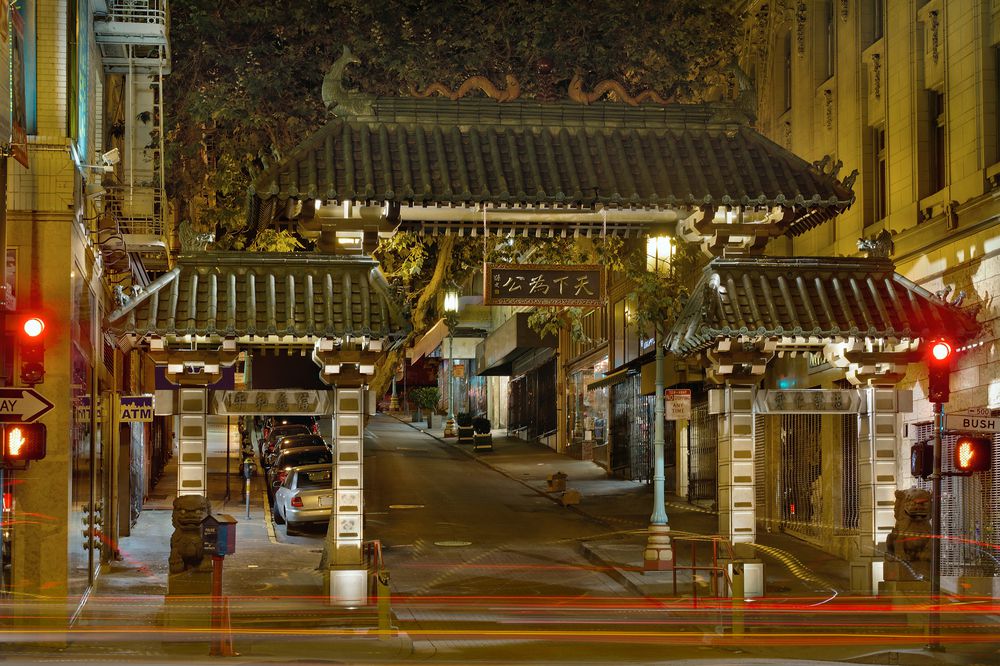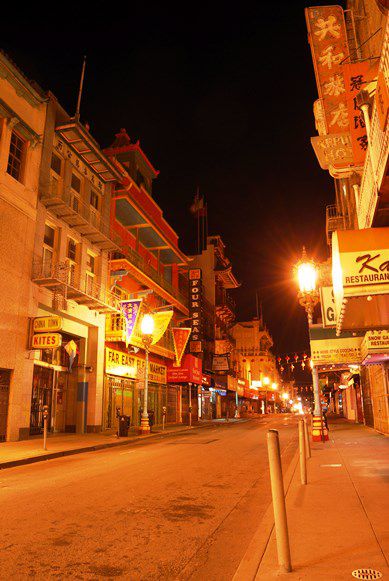Chinatown Ghost Stories
The ghosts of Chinatown
A neighborhood of haunting traditions By Adam Brinklow Oct 27, 2016, 11:00am PDT first appeared in Curbed SF
No neighborhood lends itself more naturally to Halloween-time ghost stories than Chinatown. Which is why some neighbors don’t want anyone telling ghost stories in Chinatown.
“The locals are very suspicious of it,“ Cynthia Yee, founder of Chinatown Ghost Tours, tells Curbed SF.
She launched the 90 minute walking tour of Chinatown alleys 12 years ago, after taking a similar haunting tour in New Orleans.
Amazingly, nobody had yet beat her to the idea. A lifelong Chinatown resident born on Beckett Street, she says that many of her neighbors have a sincere and motivating belief in the paranormal.
Which means that, according to the conventional wisdom, talking about the neighborhood ghosts might rile them up.
“Chinatown loves me,” Yee adds. “But they hate the tour.”

And yet, stories do get around. Most of the tales she relates came to her from family members. Yee’s great grandfather, for example, told of a mysterious phantom cow he saw wandering up Grant Street (then called Dupont Street).
Years later, he saw it again—on the day of the 1906 earthquake.
Ghost cows aside, Chinatown ghost stories may manifest in forms more similar to those of other neighborhoods. Like the onetime brothel girl supposedly seen sitting at the window of her former apartment, still waiting for the return of the husband who died in World War I.
The neighborhood’s attitudes about local folklore are hardly uniform. Yee says that many of her friends approach her with new stories, a game of neighborhood ghost gossip. “Did you hear the one about…?” etc.
But others may be more cautious. For that matter, Yee herself is not a naysayer. She believes the stories—or at least, she doesn’t disbelieve them.
“I burn a lot of incense,” she says when asked whether she worries about attracting spirits of her own.

She also hands out firecrackers to patrons, meant to chase curious ghosts away. The pops are a common noise in the nighttime alleys, along with the ringing of bells. Yee also stops her guests in one alley so to hear the endless clatter of mahjong tiles in nearby buildings.
The secret doors and escape routes where visitors to Chinatown gambling dens once fled from Irish cops are now mostly inaccessible, but Yee points them out anyway. The effect, as with the mahjong serenade, is to emphasize that Chinatown has always been its own singular world.
But the neighborhood hauntings also illustrate how closely it’s connected with the traditions of the rest of the city. Take the venerable old YMCA building on Sacramento Street, allegedly host to the ghosts of two boys who drowned in the pool.
Now the story is a warning about staying safe, lest the pair seek a third to join them. Cautionary tales about drowning ghosts are common around the world, and Yee points out that the superstition of tragedies in threes is borrowed from the Scottish and Irish.
:no_upscale()/cdn.vox-cdn.com/uploads/chorus_asset/file/7359379/shutterstock_344606186.jpg)
:no_upscale()/cdn.vox-cdn.com/uploads/chorus_asset/file/7359327/shutterstock_390426856.jpg)
(No word on whether the recent remodel fixed up the haunting problem too.)
Chinatown even has its own version of the all-time classic American ghost story, the Vanishing Hitchhiker, this variation about a Depression-era cabbie who accepts a most unusual fair.
Even if a few of them do protest, the Chinatown old timers must love a ghost story as much as anyone. After all, someone‘s been telling them all these years.
If the locals didn’t keep the ghosts alive, who would?
:no_upscale()/cdn.vox-cdn.com/uploads/chorus_asset/file/7359391/shutterstock_390426964.jpg)